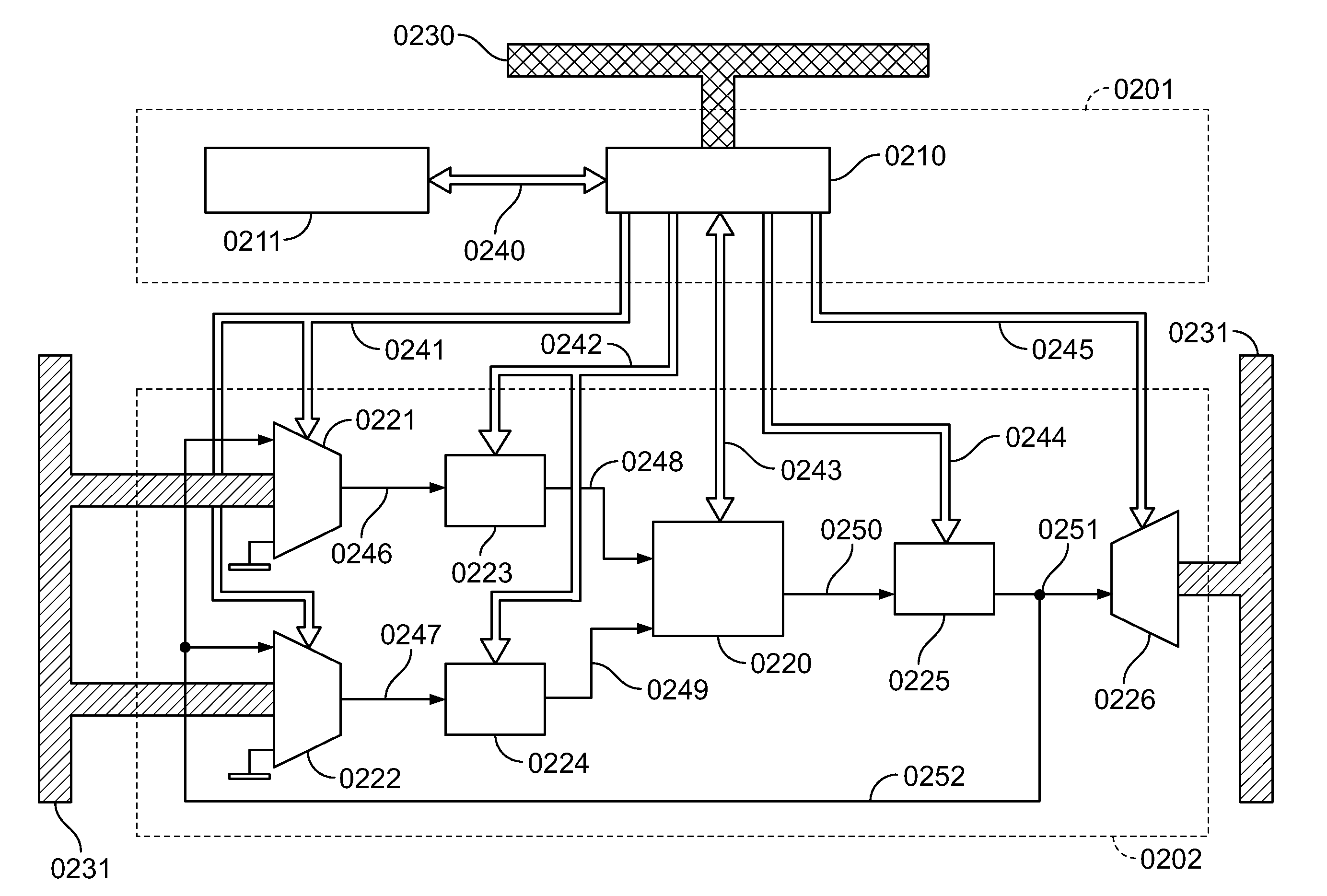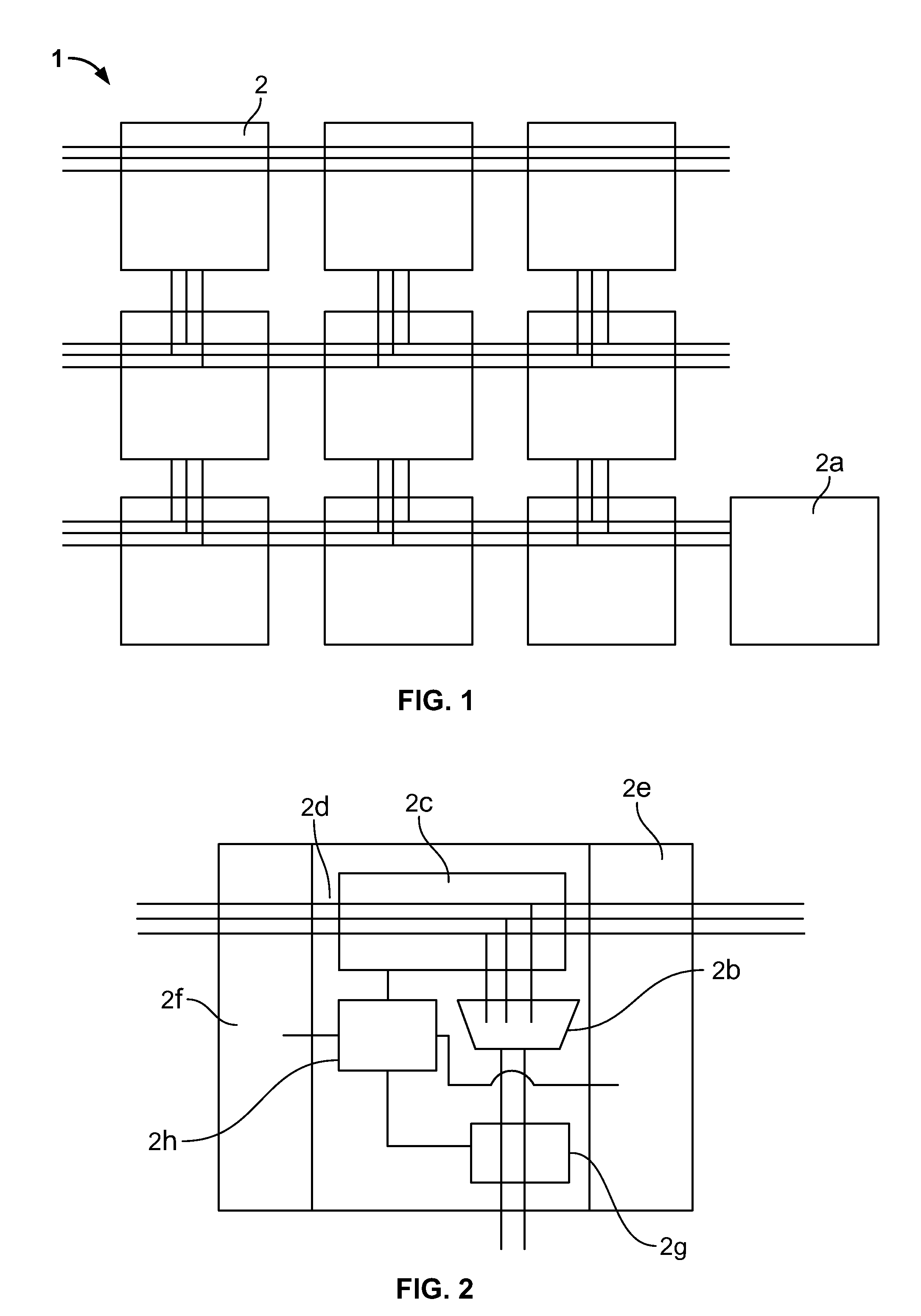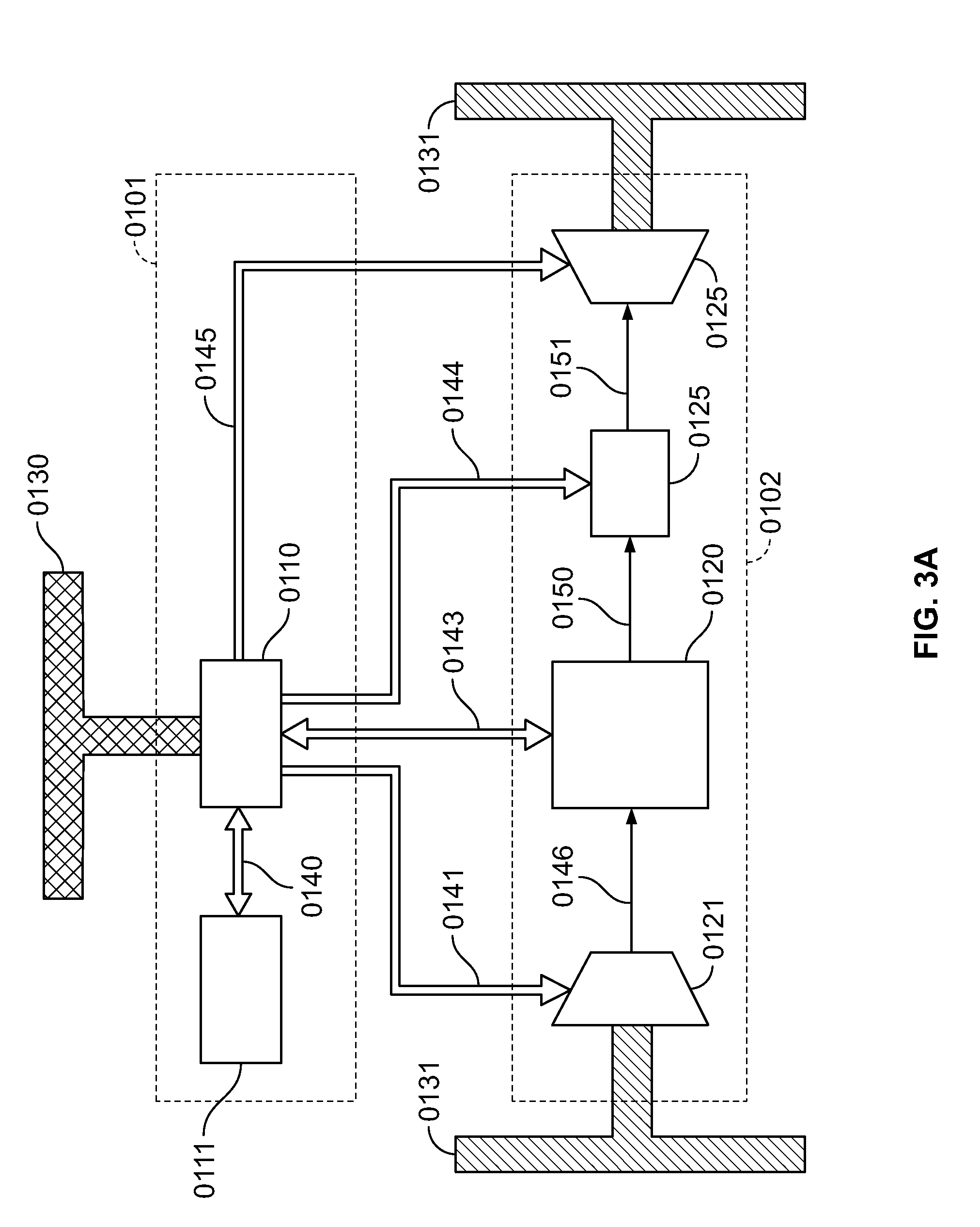Method and device for processing data
a data processing and multi-dimensional technology, applied in the field of multi-dimensional fields of data processing cells, can solve the problems of high development cost, high design cost, and high cost of circuit design and manufacturing of plurality of masks, and achieve the effect of less prohibitive and cost reduction
- Summary
- Abstract
- Description
- Claims
- Application Information
AI Technical Summary
Benefits of technology
Problems solved by technology
Method used
Image
Examples
Embodiment Construction
[0028]FIG. 1 shows an example data processing system 1. The data processing system 1 may be a multidimensional field and may include cell elements 2 that are configurable in function and / or interconnection and a configuration maintenance memory 2a assigned to them for local configuration maintenance. The configuration maintenance memory 2a may be designed to maintain at least some of the maintenance configurations in a nonvolatile form.
[0029]Multidimensional field 1 in the present examples includes three rows and three columns of PAEs such as those discussed in the publications by Pact Technologies cited in the background. Referring to FIG. 2, these units may have ALUs 2b which may be configurable in a coarse granular form, which may be flanked on both sides with conventional forward / reverse registers 2e, 2f, and to which data may be sent via a multiplexer 2c from a bus system 2d. In addition, they may feed output data to a bus system in the next lower row via another multiplexer 2g...
PUM
 Login to View More
Login to View More Abstract
Description
Claims
Application Information
 Login to View More
Login to View More - R&D
- Intellectual Property
- Life Sciences
- Materials
- Tech Scout
- Unparalleled Data Quality
- Higher Quality Content
- 60% Fewer Hallucinations
Browse by: Latest US Patents, China's latest patents, Technical Efficacy Thesaurus, Application Domain, Technology Topic, Popular Technical Reports.
© 2025 PatSnap. All rights reserved.Legal|Privacy policy|Modern Slavery Act Transparency Statement|Sitemap|About US| Contact US: help@patsnap.com



